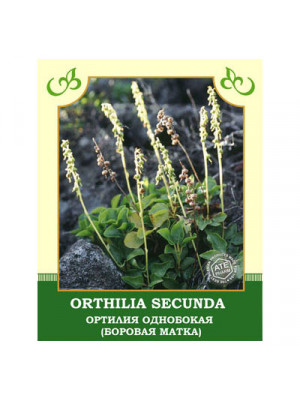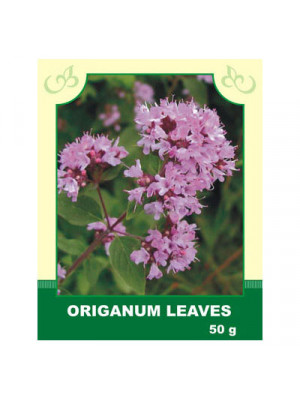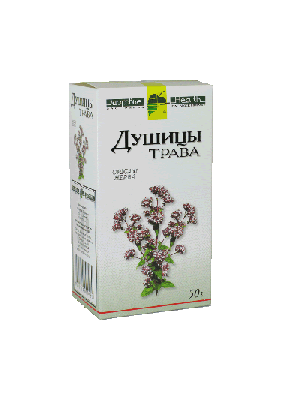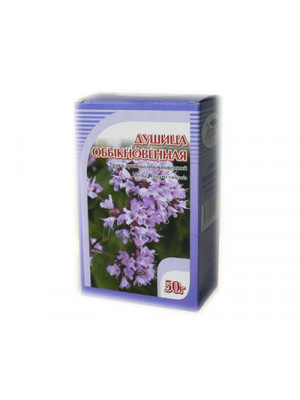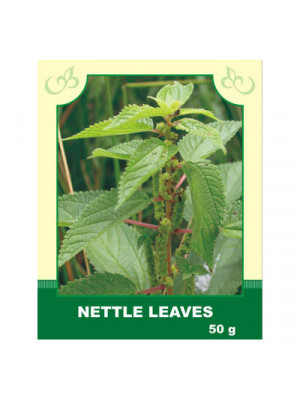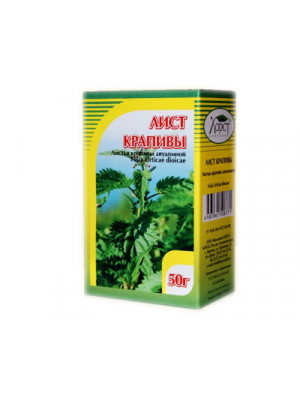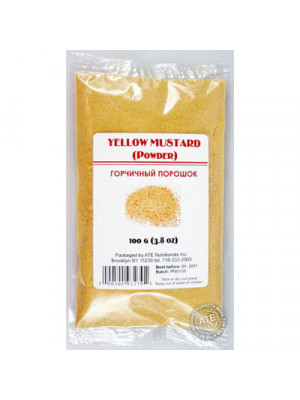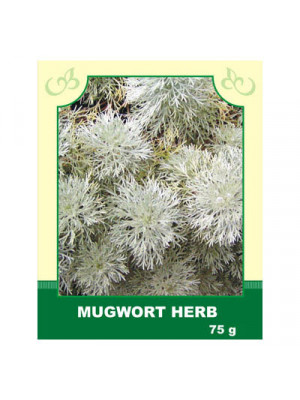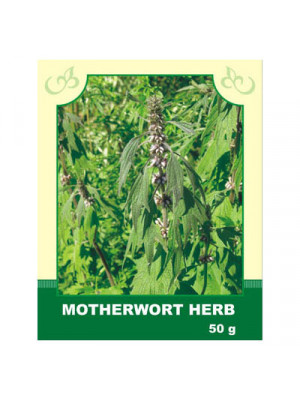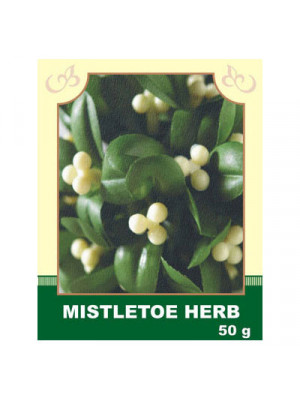Herbs
Description. Orthilia Secunda is native for Siberia. This herb consists of tannins, flavonoids, gums, bitters, lemon and tartaric acids, arbutin and saponin. Orthilia Secunda is recommended by herbalists as an herb for gynecological disorders and inflammations. Orthilia Secunda preparations are used for sterility, bleedings, infantilism, cervical erosion, for menstrual cycle derangements, toxicosis. In some countries Orthilia Secunda is used as diuretics and antiseptics for kidney and urinary bladder inflammations. More than that, the decoction of Orthilia Secunda is used as an eye wash.
Attention! Before using any herbal products, make sure that you have full knowledge of how the herb works and any adverse reaction it may cause.$8.99
Description. Oregano herb contains volatile oils, tannins, ascorbic acid. Oregano is usually thought of as a culinary herb, but it has been used medicinally for thousands of years. Oregano is a powerful antiseptic; it also has calming, diuretic, cholagogic properties. Use. Oregano is very useful for indigestion, bloating, flatulence, coughs, urinary problems, bronchial problems, headaches, swollen glands, and to promote menstruation. It is also used to relieve fevers, diarrhea, vomiting, and jaundice. Unsweetened tea can be used as a gargle or mouthwash. Externally, Oregano leaves can be pounded into a paste. This paste can then be used for pain from rheumatism, swelling, itching, aching muscles, and sores. For tired joints and muscles, put a handful of Oregano leaves in a coffee filter, mesh bag, or cheesecloth bag and run steaming bath water over it. Allow it to steep in the tub with you as you relax in the warm, fragrant water.
Attention! Do not take oregano while being pregnant.
Attention! Before using any herbal products, make sure that you have full knowledge of how the herb works and any adverse reaction it may cause.$6.99Internally, it is taken as an expectorant and diaphoretic for upper respiratory tract diseases, flu, and asthma. Also used as an anti-inflammatory, antimicrobial, and analgesic for rheumatism, paralysis, epilepsy; for atony of the intestines, to stimulate appetite and improve digestion; in gynecology - for uterine bleeding and women's diseases; as a sedative for fainting and mental illnesses.
Method of application and dosage: 2 tablespoons of raw material are poured with 200 ml of boiling water, infused for 45 minutes, strained. The obtained infusion is brought to the original volume. Taken orally in 1/2 cup 2 times a day, 15 minutes before meals.
Externally, used as compresses for insomnia and headaches, and for washing the head with hair loss. 10 g of raw material is poured with 200 ml of boiling water, infused for 1 hour; for douching, 20-30 g of raw material is poured with 2-3 liters of boiling water, infused until cooled. Used in warm (!) form; for baths, 50 g of raw material is poured with 10 liters of boiling water, infused until completely cooled.
Contraindications: individual intolerance, pregnancy, and for people with increased stomach secretion.
$6.99- Oregano herb contains volatile oils, tannins, ascorbic acid. Oregano is usually thought of as a culinary herb, but it has been used medicinally for thousands of years. Oregano is a powerful antiseptic; it also has calming, diuretic, cholagogic properties.$6.99
Description. Nettle is very popular with herbalists and homoeopathists. Nettle consists of formic acid, mucilage, mineral salts, ammonia, carbonic acid and water. The herb also contains vitamins C, K, B2, carotin, and nutrients like iron, potassium, calcium, sulfur and proteins. Nettle leaf produces styptic, blood and bile expelling, diuretic, purgative, anti-inflammatory, antiseptic, antispasmodic, expectorating, spasm inducing and tonic effect. Nettle leaf preparations help improve blood coagulability, raises the quantity of hemoglobin, platelets and red corpuscles in blood. It also helps lower the quantity of sugar in blood and has a stimulating action. Do not use in cases of hypersensitivity, thick blood, diseases requiring surgical intervention. Use with care with kidney problems. Use. Use in cases of hemorrhages (including pulmonary hemorrhage, blood in urine, intestinal and hemorrhoid hemorrhage), vitamin deficiency, arteriosclerosis, inflammation of the gallbladder, ulcer of the stomach and the upper small intestines (duodenum), constipation, inflammation of the small intestines, non-healing festering wounds, surface ulcers, boils, herpes, acne, bed sores, iron deficiency anemia, kidney diseases, diseases of the respiratory tract, poly-mecorrhea, fibroid tumors of the uterus, epilepsy, hysteria, rheumatoid arthritis, aches and pains in the muscles, gout, diabetes mellitus, angina, and to improve gums and hair growth.
Attention! Before using any herbal products, make sure that you have full knowledge of how the herb works and any adverse reaction it may cause.$6.99Internally, it is used for gout and rheumatism; kidney and bladder diseases; liver and gallbladder diseases; tuberculosis of the lungs; dysentery; as a hemostatic agent for pulmonary, renal, uterine, and intestinal bleeding; and for digestive disorders.
Method of application and dosage: 2 tablespoons of raw material are poured with 200 ml of boiling water, heated in a water bath for 10-15 minutes, infused at room temperature for 45 minutes, squeezing out the remaining plant material. The obtained infusion is brought to the original volume, and it is taken in 1/4-1/2 cup 3-5 times a day before meals.
Externally, nettle is applied for hypo- and avitaminosis, as well as for strengthening hair and treating furunculosis.
Contraindications: individual intolerance, increased blood clotting, hypertensive disease, pregnancy, bleeding caused by cysts, polyps, and other tumors of the uterus and its appendages. Special caution for patients with kidney disease.
$6.99Internally, it is taken as a warming, anti-inflammatory, toning, antibacterial, and expectorant remedy. It lowers cholesterol levels in the blood, improves appetite, and accelerates metabolism. It promotes the expectoration of mucus during colds.
Externally, it is used as hot mustard foot baths — a popular and safe method of home treatment for colds.
Contraindications: Before using mustard for therapeutic purposes, it is necessary to consult with a doctor.
$5.99Internally, the infusion is used to stimulate appetite, as an analgesic and sedative in cases of neurasthenia and intestinal colic. Applied as an infusion for gastritis, insomnia, spasms, and bronchial asthma in kidney stone disease.
Method of application and dosage: Steep 1 teaspoon of wormwood in ¼ liter of boiling water and infuse for 10 minutes. Cool the tea and drink three times a day, one cup after meals.
Externally, applied as compresses, rinses, and local baths for inflammation of the mammary glands, quick maturation of boils, toothache, and foot sweating.
Contraindications: Individual intolerance, anemia, pregnancy. Consultation with a specialist is recommended before use.
$6.99Internally, it is taken for nervousness, cardiomyopathy, insomnia, neurasthenia, depression, venous-vascular dystonia, gastrointestinal disorders, enlarged thyroid gland, inflammation of the intestines, scanty menstruation, initial stages of hypertension, increased nervous excitability, especially associated with menopause in women and prostate hypertrophy in men.
Method of application and dosage: Steep 15 g in 200 ml boiling water, boil on a water bath for 15 minutes, infuse at room temperature for 45 minutes, strain, squeezing the remaining raw material. Bring the ready infusion to the original volume with boiling water and take 1 tablespoon 3-4 times a day before meals.
Externally, it is applied for burns, as it has a strong anti-inflammatory and antibacterial effect. Steep 2 tablespoons in 300 ml boiling water, infuse for 1 hour, and use as directed.
Contraindications: Individual intolerance, bradycardia, or arterial hypotension.
$5.99Internal use:
Take mistletoe infusion internally for hypertension, arteriosclerosis, dizziness, seizures, epileptic seizures, hysteria, headaches, pulmonary and uterine bleeding. Mistletoe's aqueous infusion reduces blood pressure, enhances heart activity, dilates blood vessels, and reduces the excitability of the central nervous system, increasing overall vitality.
Application and dosage: Put 1 tablespoon of mistletoe in a thermos and pour 250 ml of boiling water, infuse for 30 minutes. Take 1/3 cup three times a day before meals.
External use: Used for rinsing and sitz baths for hemorrhoids. An infusion is used for washes and compresses on chronically non-healing wounds, ulcers, and abscesses. For baths, take 60 g of raw material per 1 liter of water, boil for 10-15 minutes over low heat, and infuse for 6-8 hours.
Contraindications: Individual intolerance, pregnancy.
$6.99


